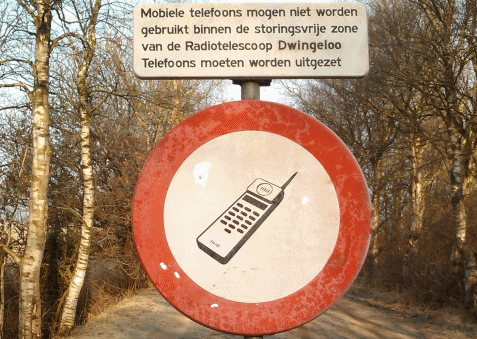Daily Image
06-04-2010The Radio and Telecommunications Terminal Equipment Directive
| Submitter: | Ronald Halfwerk |
| Description: | Some ASTRON activities are a little less sexy than the ones for which we are justly famous, but they are all part of the responsibilities that come with being a major high-tech facility. The Radio and Telecommunications Terminal Equipment Directive, known as the R&TTE directive or RTTE for short, is the main route to compliance for Radio and Telecoms equipment that is sold in Europe. Ultimately, all electrical devices ranging from hair-dryers to cellular phones have to conform to the Conformité Européenne, i.e. the EG Declaration of Conformity. This is indicated on the device by the well-known "CE" marker. ASTRON, together with the international test laboratory TÜV Rheinland EPS in Niekerk (Groningen) conducted a seminar on March 16th about this R&TTE directive. Keynote speakers from the Agentschap Telecom (the Dutch Radio Communications Agency) and from a Notified Body gave introductions on the regulatory issues. Speakers from Dutch industries then added their insights about the practical aspects of how to make sure that devices are compliant with this directive. This includes the safety aspects (Specific Absorption Rate) of directive antennas applied in e.g. short-range devices. The seminar was attended by 26 participants, mainly from Dutch industries. For extremely sensitive systems like the WSRT, LOFAR and of course the SKA, man-made noise is certainly an issue. ASTRON's Koos Kegel gave a presentation about the need for a restricted access zone where mobile phones must be switched off. Starting with an overview of radio interference principles like Blocking and Intermodulation, he used Friis equations to emphasize the extreme sensitivity of the WSRT. As an example of the minimum in-band detectable signal level at 1.5 GHz, he showed that the WSRT could detect an interferer of 1 nW (!) with a one second integration time at a distance of 500 km! Electronic devices at closer distances could easily exceed the limits, causing blocking or intermodulation effects in the WSRT receivers. ASTRON can support third parties in the design phase of electronic products, using experience gained through one of the spin-off companies of its Astro Tec Holding (ATH). In the latter case, Marchel Gerbers has done a splendid job in qualifying systems for final product approval. Using equipment like its EMC chamber or Anechoic test chamber, ASTRON can also support and advise manufacturers in the pre-compliance phase of their product development. They are then well-prepared when applying for approval to a Notified Body (designated by the government) like TÜV Rheinland EPS for the R&TTE directive for the assessment of the technical construction files. |
| Copyright: | (c) foto: Koos Kegel + TüV Rheinland EPS |
| Tweet |  |
